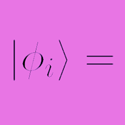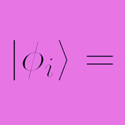Finding the missing sign
In a many-body physics problem, the first approximation to account for interactions is to assume that each particle moves in an effective mean field created by all of the other particles. The mutual interactions of neutrons and protons in nuclei, for example, generate a mean field in which the nucleons move in single-particle orbits. Hartree-Fock is a simple mean-field theory in which the single-particle orbits are either fully occupied or not at all. A generalization of this method that can describe quasiparticles in the presence of pairing is Hartree-Fock-Bogoliubov (HFB) theory (called Bogoliubov–de Gennes theory in condensed matter physics).
In going beyond mean-field theory, different HFB solutions are mixed and the overlap of HFB wave functions must be computed. However, standard formulas leave the sign of the overlap of the wave functions undetermined. This is not a problem for systems with discrete symmetries, but it is present when the HFB wave functions are triaxial, which occurs in the low-lying rotational bands of , or break time-reversal symmetry.
In a Rapid Communication appearing in Physical Review C, Luis Robledo of Universidad Autonoma de Madrid uses the technique of fermion coherent states to determine the sign of wave-function overlap. The overlap is given in terms of a quantity similar to a determinant called the Pfaffian of a skew-symmetric matrix. The goal is to simplify the implementation of challenging theory projects, such as those that calculate the projection of triaxial angular momentum. – John Millener and Ben Gibson





